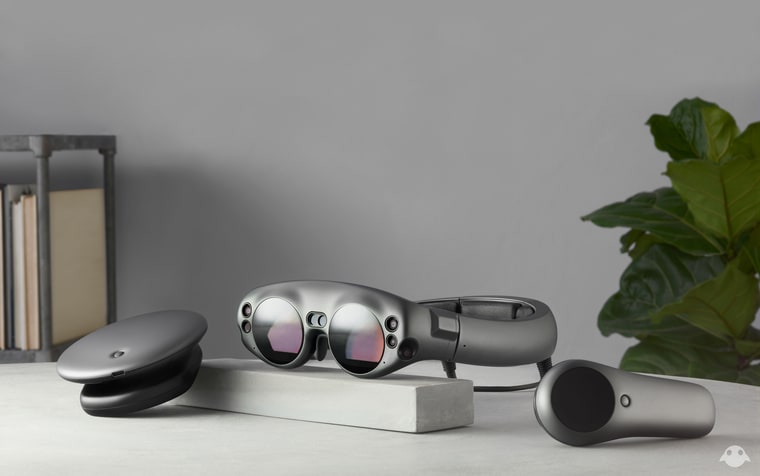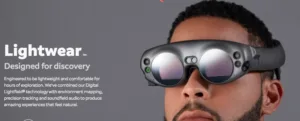Magic Leap has finally shown something of its hardware, although it chose to do those through an article in Rolling Stone. However, little was really revealed. The company showed an unusual looking headset, the ‘Magic Leap One:Creator Edition’ with a belt-mounted processor and gave the publication a tour of some experiences, which it was impressed with, especially the integration of real world objects with the virtual world. Features shown included running multiple virtual desktop monitors and using eye tracking so that an avatar maintained eye contact with the reporter.
The goggles also appear to occlude the background when looking at objects, according to the report.

The headset is is said to be the ninth generation of the hardware that Magic Leap has created. The system sits on the forehead, but it goes around the head like a headband. It will be available in two sizes and custom prescription lenses will be available.
The drive system is ‘close to a MacBook Pro or an Alienware PC’ and has a high power CPU and GPU and is effectively a full computer system with storage and Wi-Fi. There were no specifications released, nor was battery life quoted.
The user’s eyes are not visible on the headset which suggests a low level of optical transmission.
The field of view is described as ‘about the size of a VHS tape held in front of you with your arms half extended. It’s much larger than the HoloLens’ although Magic Leap said that future generations of hardware will have much wider field of view.
There is also a controller.
No details were released of pricing or shipping dates, although shipping will be in 2018 and the headset will be sold to early adopters as well as developers.
Analyst Comment
Specialist analyst and occasional Display Daily contributor, Karl Guttag has said that he sees the field of view as probably around 50º. We also read that using prescription lenses helps a lot with the optic designs compared to trying to deal and taking glasses into account. The other interesting point in that in photos of the user with the headset, the eyes are not visible. That may be an issue for interaction, but also suggests that a lot of optical processing is done between the world and the user.
For almost $2 billion, the company doesn’t seem to have a great deal, yet. (BR)

